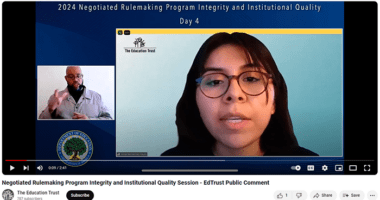America’s College Attainment Problem Is About More Than Affordability
Amid mounting concerns about the cost of college and toppling student loan debt, policymakers are proposing various forms of relief, from increased financial support to free college entirely. Many of these proposals would require what’s called a federal-state partnership — an agreement between both tiers of government that, in this case, would ensure that colleges and universities are prioritizing success for all students. But as past federal-state partnerships show us, this doesn’t always happen.
To help ensure that any proposed federal-state partnership effectively addresses issues of affordability, completion, and inequities among groups of students, our latest paper, Fixing America’s College Attainment Problems: It’s About More Than Affordability, outlines critical questions that policymakers, analysts, and advocates must consider when crafting and reviewing any proposals. These include:
- Is the amount of federal money proportionate to the level of demand the partnership places on states and/or institutions? Are the eligibility requirements for states — including the financial ask — sensitive to state context?
- Is the funding new money or pulled away from existing higher education programs?
- Will the way funding is structured exacerbate or ameliorate education spending differences between wealthier and poorer states and/or institutions?
- What are the performance requirements, and what actions do they incentivize? What are the prescribed consequences for not meeting some or all of these requirements?
Read more in the full report here, and see the list of critical questions here.












